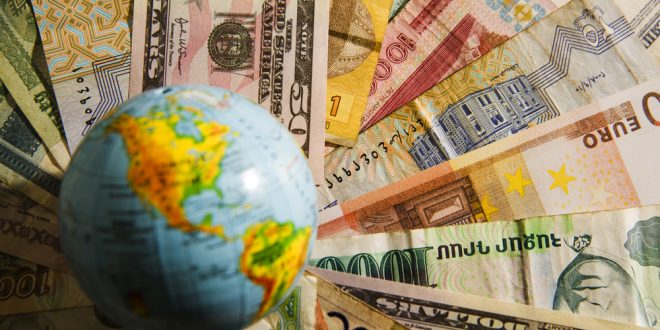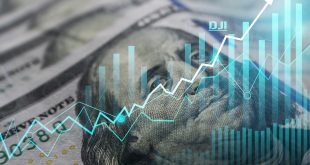In the United States, inflation, as measured by the change in the Personal Consumption Expenditures (PCE) Price Index, rose to 3.5% on an annual basis in August, up from 3.4% (revised from 3.3%) in July, according to the US Bureau of Economic Analysis on Friday. This reading was consistent with market expectations.
The annual Core PCE Price Index, the Federal Reserve’s preferred inflation gauge, climbed 3.9%, somewhat slower than the 4.3% (revised from 4.2%) increase recorded in July. The PCE Price Index and the Core PCE Price Index climbed 0.4% and 0.1%, respectively, on a monthly basis. Both of these statistics fell short of analysts’ expectations.
The survey also revealed that Personal Income and Personal Spending both increased by 0.4% on a monthly basis.
The dollar retreated from a 10-month high against a basket of currencies on Friday but was still on track for its biggest quarterly gain this year, giving the yen breathing room amid fears of Japanese government intervention in the exchange market.
The dollar index, which measures the performance of the US currency against six other major currencies, fell by 0.4 percent to 105.70 points, but it is still heading to end the current quarter with an increase of 2.8 percent after rising for the eleventh week in a row, achieving the longest period of gains in nine years.
US Treasury bond yields, which had been providing support to the dollar, fell from their highest level in years overnight.
The decline in bond yields and the 27 percent rise in oil prices this quarter helped the dollar rise during the year against almost all major currencies.
Although the yen received some support, pressure remained, with it trading near 150 to the dollar, a level that may prompt the Japanese government to intervene. In the latest trading, it recorded 149.125 against the dollar, which fell 0.13 percent during Friday.
The euro rose for the second day by 0.4 percent to $1.0608, moving further away from its lowest level in several months recorded this week at $1.0488.
The British pound rose 0.6 percent to $1.2268 after reaching its lowest levels since March 17 this week, following data revealing on Friday that the performance of the British economy since the beginning of the Covid-19 pandemic was stronger than previously thought.
Oil
Oil prices fell on Friday at settlement on macroeconomic and profit-taking concerns, but rose about 30 percent during the third quarter, as voluntary production cuts by the OPEC+ alliance put pressure on global crude oil supplies.
Brent crude futures for November, which expire on Friday, fell seven cents to $95.31 a barrel at settlement, and rose about 2.2 percent during the week and 27 percent during the third quarter. Brent crude futures for December fell 90 cents to $92.20 a barrel.
US West Texas Intermediate crude fell 92 cents to $90.97 a barrel, up one percent during the week and 29 percent during the third quarter.
With oil futures approaching $100 per barrel, many investors took profits during the rally due to ongoing macroeconomic concerns.
Data from the Energy Information Administration showed that in July, US crude oil production grew to its highest levels since November 2019.
The average price of Brent is expected to reach $89.85 per barrel in the last quarter of the year, and $86.45 per barrel in 2024, according to a Reuters poll of 42 economists and published on Friday.
Gold
Gold prices rose on Friday as the rise of the dollar and US Treasury bond yields halted, but it is on track to record a monthly and quarterly decline under pressure from growing expectations that the US Central Bank will keep interest rates high for a longer period.
The dollar fell from a 10-month peak, and US Treasury bond yields fell from a 16-year peak, which increased the attractiveness of gold, but the currency and bonds are on their way to recording the best quarterly performance in a year.
Gold touched its lowest level in six months on Thursday and is on track to record its worst monthly performance in seven months, with a decline of 3.5 percent in September and a quarterly decline of 2.5 percent.
Higher interest rates increase the opportunity cost of holding the yellow metal, which is denominated in dollars and does not generate a return.
As for other precious metals, silver rose in spot transactions 2.1 percent to $23.07 per ounce, platinum also rose 0.9 percent to $912.54 per ounce, and palladium increased 0.1 percent to $1,273.69. If all of them manage to maintain the rise, the three metals are on track to record quarterly gains.
Europe
European stocks rose on Friday, supported by gains in luxury goods stocks, as investors awaited a series of economic data towards the end of a difficult quarter.
Preliminary official data showed that the French inflation rate slowed unexpectedly in September, as the decline in price increases in the food sector outweighed the rise in the energy sector.
Luxury goods stocks increased, such as LVMH and Hermes, which each rose 2.3 percent, which supported the European index in early trading.
Adidas shares jumped 6.2 percent after its American counterpart Nike’s profits exceeded estimates on Thursday.
The STOXX 600 index is heading to end the third quarter of the year with a decline of 2.3 percent, with the German DAX index lagging behind its peers in the region, incurring a loss of 4.6 percent.
Data showed German retail sales fell unexpectedly in August, as persistent high inflation weighed on consumption in the euro zone’s largest economy.
Meanwhile, reviews of official data released on Friday showed that Britain’s economic performance since the start of the Covid-19 pandemic has been stronger than previously thought, with faster growth than Germany or France.
 Noor Trends News, Technical Analysis, Educational Tools and Recommendations
Noor Trends News, Technical Analysis, Educational Tools and Recommendations





